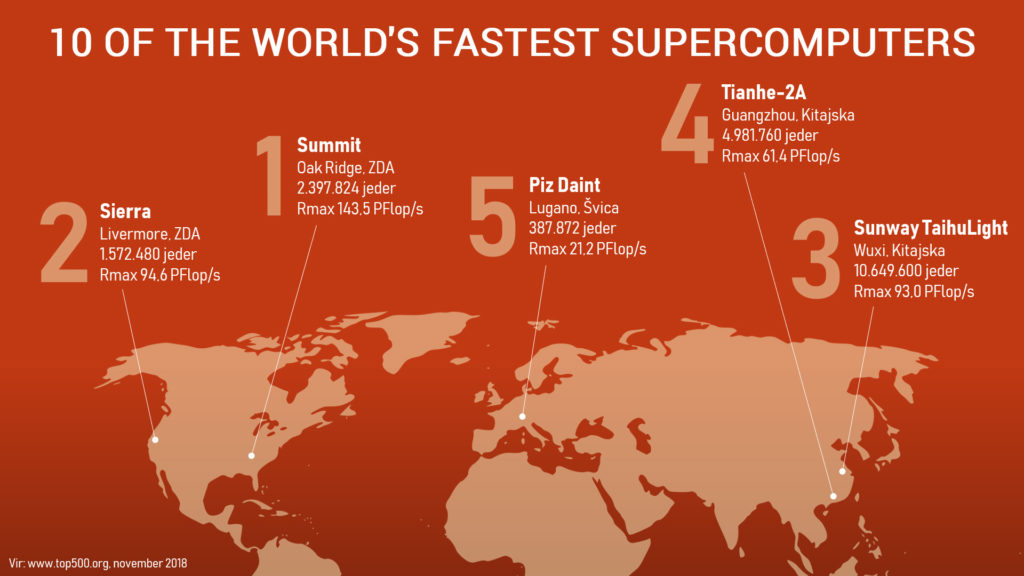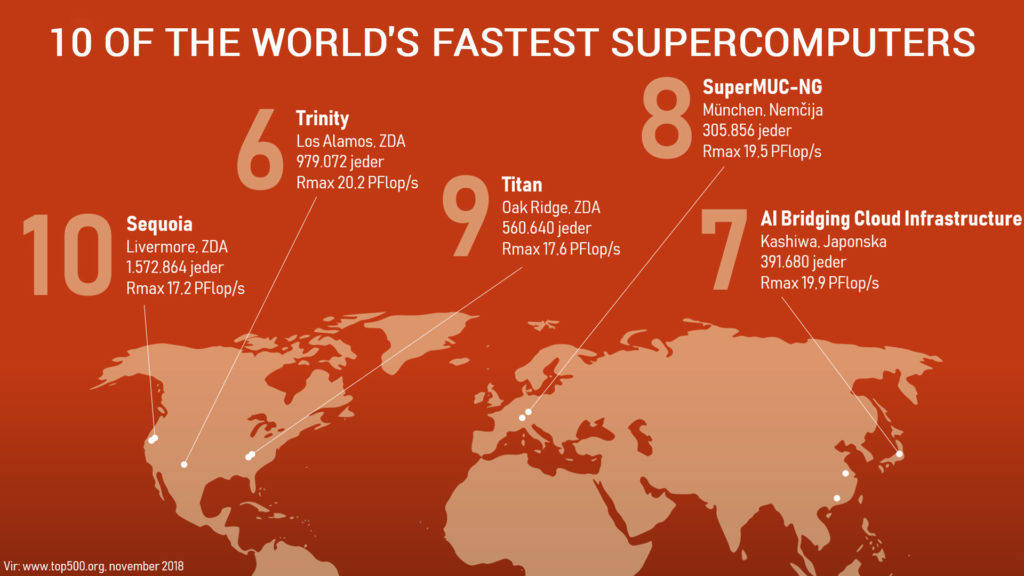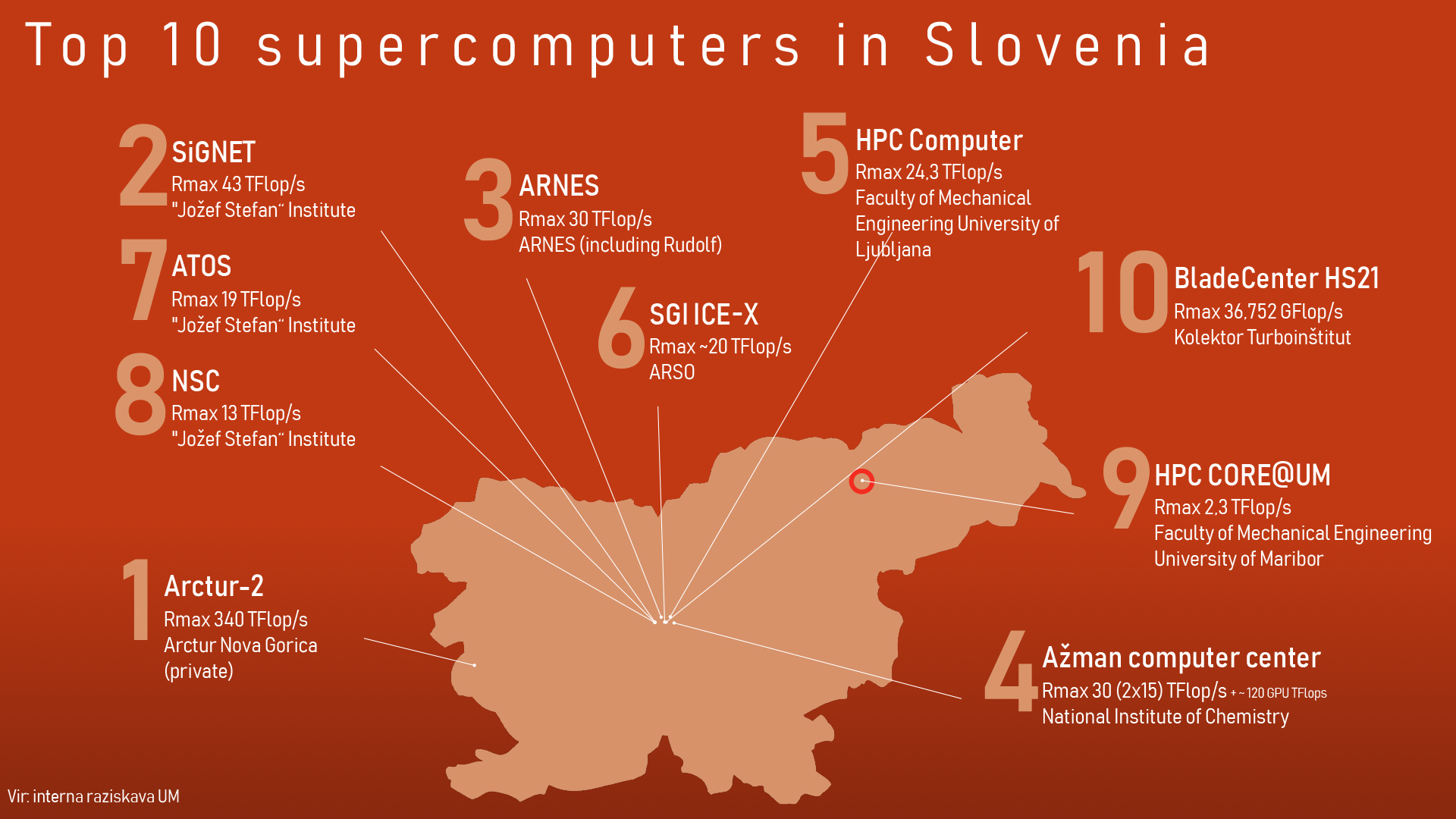HPC RIVR in the world
The planned HPC RIVR equipment will place Slovenia among countries with developed supercomputing technology and in the Top500 ranking among the 100 largest supercomputers in the world.
Regarding centre capacity, we will catch up with other countries, such as the Czech Republic, Poland, Austria and the Netherlands. Regarding computing power capacity per capita, we will achieve at least 750 TFlops per million population, which is at the very top of Europe (data from November 2017). It is expected that some European countries will tenfold increase their supercomputing capacities in the next three years, which of course requires an outlined long-term strategy of supercomputing development in Slovenia as well, with continuous investments in relevant equipment, research and education.
For more than ten years, the vast majority of European Union states already has an outlined strategy of supercomputing development and continuous funding of HPC centres that are in some countries organised as national centres for the use in science, research and industry. 25 countries are members of PRACE, an European organisation for advanced computing, among them also Slovenia.
In Europe and around the world, intensive and partly independent investments in HPC centres, parallel centres for processing significant amounts of data as well as rapid exchange of information between centres have led to efforts to improve consistency between operations in all fields of supercomputing, with the EuroHPC project taking the lead as a result of the decision to establish large “pre-exascale” and “exascale” trans-European centres that will meet the needs of all scientific disciplines and be able to compete with similar centres in USA, China and Japan. Most of the national HPC centres in Europe are actively involved in these efforts, with the emphasis on a newer concept of distributed centres based on technologies that have been developed in the last fifteen years. In order to cooperate in this field, it is necessary to have experience in planning and managing HPC centres, to cooperate in international projects with intensive computing and data needs, to have experience in developing applications that exploit high capacities of HPC centres as well as that there is the need of the industry to incorporate this in its development plans and thus increase its own competitiveness


European countries that have an outlined strategy of supercomputing development and are continuously investing in the development and upgrade of the equipment have more than 150 TFlops of computing capacity per million population, developed western European countries about 500 TF/1M, with the exception of Switzerland with more than 2,500 TF/1M. As an example, in the last 10 years, the Czech Republic has been annually investing around 10 million Euro in the supercomputing infrastructure. Croatia as well has recently invested 44 million Croatian kuna (HRK) in the HPC Centre Bura in Rijeka. In all smaller computing centres, Slovenia has around 50 TFlops per million population at its disposal. However, the Top500 ranking does not include other Balkan countries and countries of the former Soviet Union.
The most powerful supercomputing system in Europe is Piz Daint in Switzerland that has merely 21% of the capacity of the most powerful supercomputer Sunway TaihuLight operating in China. The most powerful supercomputerin EU countries is Cineca in Italy, which is already 3-times less powerful compared to Piz Daint. Poland and the Czech Republic dispose of supercomputers with a capacity of approximately 1.5 PFLOPS, which is similar to what we will achieve with HPC RIVR.
In Slovenia there are some smaller HPC clusters, however, none of them can offer a computing capacity greater than 50 TFlops. This is considerably less than the majority of European countries that also dispose of centres with PFlops capacity or more.




